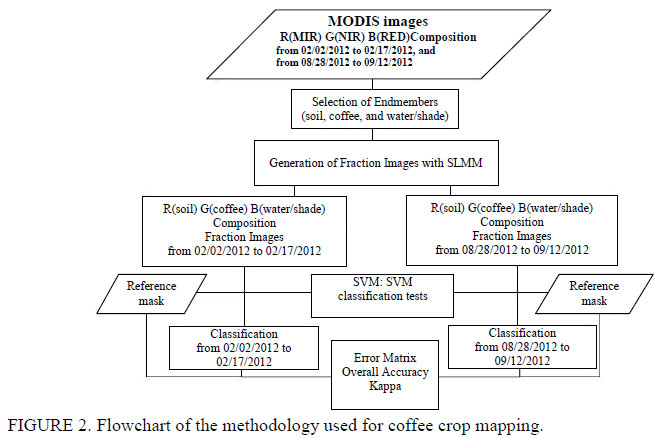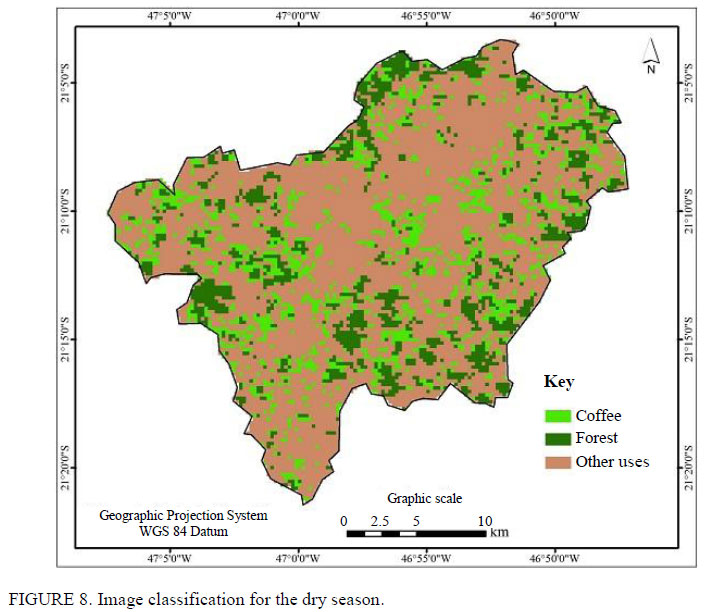Coffee production was closely linked to the economic development of Brazil and, even today, coffee is an important product of the national agriculture. The State of Minas Gerais currently accounts for 52% of the whole coffee area in Brazil. Remote sensing data can provide information for monitoring and mapping of coffee crops, faster and cheaper than conventional methods. In this context, the objective of this study was to assess the effectiveness of coffee crop mapping in Monte Santo de Minas municipality, Minas Gerais State, Brazil, from fraction images derived from MODIS data, in both dry and rainy seasons. The Spectral Linear Mixing Model was used to derive fraction images of soil, coffee, and water/shade. These fraction images served as input data for the supervised automatic classification using the SVM - Support Vector Machine approach. The best results concerning Overall Accuracy and Kappa Index were obtained in the classification of the dry season, with 67% and 0.41, respectively.
spectral linear mixing model; supervised classification; Overall Accuracy; Kappa Index











